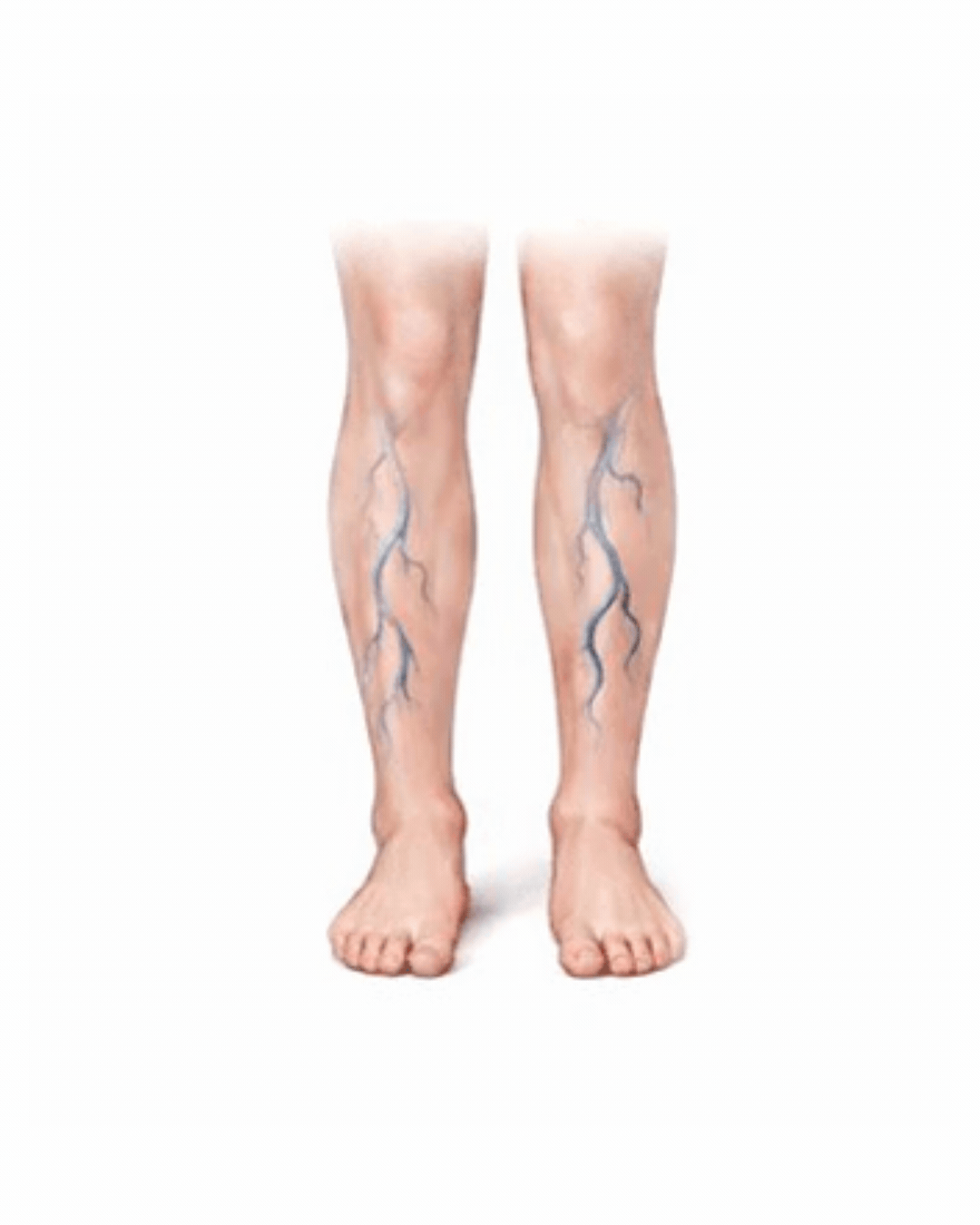Vein Problems Are Not a Problem For Physicians Vein Clinics
What is Vein Disease or Chronic Venous Insufficiency?
Venous disease starts when blood doesn’t flow properly through the veins back to the heart. The pooling of blood in the vein causes it to swell, leading to discoloration and discomfort. Large veins become varicose veins, while smaller veins are known as spider veins.
Varicose veins and spider veins come in all shapes and sizes. They affect approximately 80% of adults. While many see varicose veins and spider veins as a cosmetic matter, varicose veins could actually lead to life-threatening health issues without proper treatment.
Varicose Veins vs. Spider Veins
Though varicose veins and spider veins are often used interchangeably, they are quite different.
Appearance
Varicose veins often appear enlarged, bulging and twisting, and they are raised above the skin’s surface.
Spider veins look like mini varicose veins. They are smaller in size and called “spider” veins due to their spider-like appearance. They can be purple or blue in color and do not bulge out of the skin.
Where
Varicose veins often appear on the inside of your legs, back of the calves and thighs.
Spider veins can appear on the face, but also present themselves on the legs at times.
How Varicose and Spider Veins Form
Damaged or weakened valves can cause varicose veins. Blood, instead of pumping out of the veins, leaks back and accumulates in the veins themselves.
Medications, age, lifestyle, and blood clots can all cause varicose veins.
Causes of Vein Disease
Many factors attribute to vein disease. These include:
Being overweight
Standing/sitting for a long period of time
Lack of exercise
Smoking
Genetics
Vein Disease Symptoms
Stasis dermatitis
Hyperpigmentation
Lipodermatosclerosis
When to See a Vein Specialist
Symptoms of vein disease can be mistaken for other health issues. The best way to diagnose a vein condition is to find a vein specialist near you and have an in-person appointment. Not sure how to find your doctor? Look up "vein specialist near me" in Google. Better option: Book a FREE screening with our experts at Physicians Vein Clinics to learn more about your conditions, risk factors, treatment plans and insurance coverage.
How is Vein Disease Treated?
Your vein treatment plan depends on your age, health conditions and symptoms. Vein disease can get worse without timely and proper treatment. Where can I find vein treatment near me?
Treatment for Varicose Veins and Spider Veins Include:
Conservative therapy includes wearing compression stockings, regular exercise, etc.
Endovenous Radiofrequency Ablation
Cosmetic procedures
Learn more about vein procedures for chronic venous insufficiency.
Find a Vein Clinic Near You
Many of our patients have deep veins that are not visible to the naked eye. If you are experiencing any of the listed symptoms, it is important that you schedule a free screening with one of our vein physicians.
Physicians Vein Clinics employs state-of-the-art technologies in the diagnosis and treatment of vein problems, complemented with compassionate patient care, which results in positive outcomes. Schedule an initial screening with us by calling 888-782-8346. We look forward to helping you!
Frequently Asked Questions
What is the treatment for a bulging vein on my ankle?
There are multiple treatment options such as VENCLOSE Radiofrequency Ablation, Endovenous Radiofrequency Ablation, Non-thermal, etc.
Am I safe to fly I have varicose veins?
In most cases, it is not dangerous to fly with varicose veins. However, our physicians recommend that you take the proper precautions to protect yourself from adverse reactions.
How much does it cost for vein care and vein treatment?
The cost varies depending on the severity of your vein conditions, which procedure is best for you and your insurance coverage. The first consultation is usually covered by insurance. If your vein condition is considered medically necessary for treatment by your vein doctor, we will make every reasonable effort to seek reimbursement from your insurance company. Please understand that we can't guarantee that they will provide payment. Treatment of spider veins is almost always considered cosmetic concern by insurance companies and is not covered.


